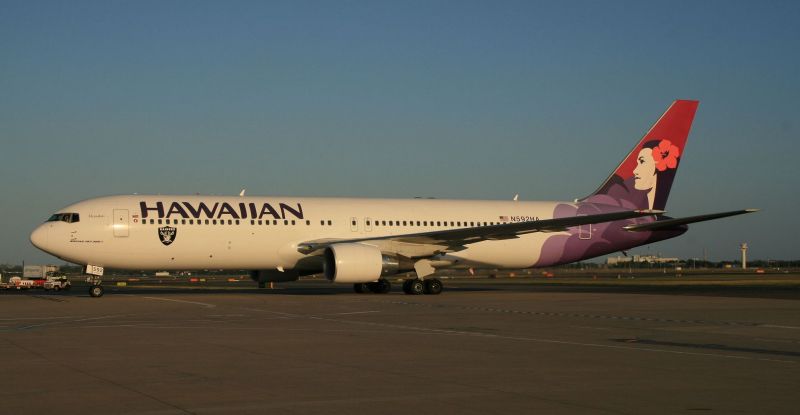Virgin America’s launch of new service from San Francisco to Hawaii creates an interesting competitive dynamic for Hawaiian Airlines – once Virgin America adopts ViaSat’s hybrid Ka/Ku antenna technology, Hawaiian will be the only airline operating from San Francisco to Hawaii without connected aircraft.
San Francisco-based Virgin America is introducing new flights to Honolulu and Maui in late 2015. But the airline has pledged that through the deployment of ViaSat’s hybrid antenna, it can offer “inflight wifi connectivity on flights serving the airline’s new Hawaiian destinations as of 2016”.
United Airlines offers flights from its San Francisco hub to both Honolulu and Kahului on Maui, and on many of those services the airline operates connectivity-equipped aircraft. United projects having most of its mainline fleet equipped to offer Internet by year-end 2015, with the exception of its Boeing 787s, which have a May 2016 target date for equipage completion. The airline’s longhaul fleet is being fitted with Panasonic Ku-band satellite-supported technology, but its P.S. transcontinental 757s utilize Gogo’s connectivity and its 737s feature Ka-powered Internet from ViaSat.
Now that Virgin America is entering both those Hawaiian markets from San Francisco with the pledge of connectivity, will Hawaiian Airlines find itself at a competitive disadvantage? Wifi access definitely gives Virgin America an advantage among the passenger segment for whom “connectivity is paramount,” says Atmosphere Research travel analyst Henry Harteveldt. He believes Hawaiian needs to make a decision as to whether wifi makes strategic sense. Among younger travellers and business customers, it is a critical part of the passenger experience, he notes.
Virgin America’s plans to operate connected aircraft on flights to Hawaii do not appear to be pressuring Hawaiian to hastily make a decision about offering wifi. The airline tells RGN that it is continuously evaluating the developments in technology impacting the feasibility of inflight connectivity. “Our decisions around in-cabin wifi are less about what other carriers’ global strategies look like and more driven by the cost and the performance of the technology. In order for connectivity to be a good fit for our strategy and guests, it would need to meet the basic criteria of good economics, strong performance over the Pacific and sufficient bandwidth to guarantee a high quality guest experience on a widebody aircraft,” the carrier states.
For now, Hawaiian operates Airbus A330s and Boeing 767 widebodies on its routes to the US mainland, and flies the Airbus widebodies from San Francisco to Honolulu and Maui. Its A330s feature First, Extra Comfort and Economy class sections. Hawaiian offers personal electrical power outlets in its Extra Comfort and First Class sections of its Airbus A330s, and USB chargers are available in the main cabin for passengers to charge small electronic devices.
Virgin America has in-seat power available at every seat on its aircraft. As Harteveldt points out, in-seat power is critical to younger passengers and business travellers. However, he highlights that Hawaiian’s operation of widebodies on flights from San Francisco to Honolulu and Maui allows it to offer more ‘extra legroom’ seats than Virgin America. Online seat configuration tracker SeatGuru shows that Hawaiian offers 30 Extra Comfort seats on its Airbus A330s with 36in pitch. The A320 narrowbodies operated by Virgin America feature 12 Main Cabin Extra seats with a 38in pitch. Both airlines offer a reclining first class seat. Hawaiian’s First Class seat pitch on the A330 is 45-46in and Virgin America’s pitch is 55in. Pitch in Hawaiian’s Economy section on the A330 is 31in-32in and Virgin America’s pitch is 32in.
Both Hawaiian and Virgin America have a strong brand awareness in competing in the mainland-Hawaii market, says Harteveldt. Hawaiian has the home turf advantage as the flag carrier of the islands, he remarks, and for decades has done a good job of transporting visitors from the mainland. In its core markets, which include San Francisco and Los Angeles, Virgin America resonates with younger travelers, forging a reputation as the “cool, hipster” airline.
Essentially, Virgin America and Hawaiian are two “strong and different brands going against each other,” says Harteveldt. “No airline has a lopsided advantage in terms of brand.”
But Harteveldt also highlights that part of the passenger experience is taking the customer where he or she wants to go. Hawaiian has a certain advantage as the leading carrier on Hawaiian inter-island routes, and also operates flights to points in Asia and Australia.
During the last couple of years, some airlines operating between the US mainland and Hawaii have cited overcapacity in the market, which prompted some head scratching when Virgin America revealed its plans to introduce flights to Hawaii. But Virgin America CEO David Cush remains confident his airline will succeed in its new Hawaiian markets.
With ample competition from United and Hawaiian, the new service Virgin America is introducing to Hawaii “will not be a cakewalk,” says Harteveldt. But Virgin America has shown it “can fight above its weight”. Harteveldt also adds that Virgin America’s employees are also likely excited about the new service and “motivated to provide a good experience”.











